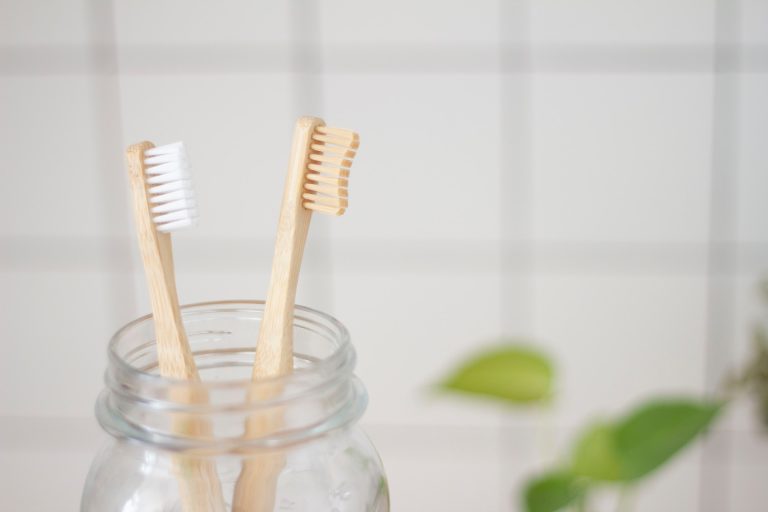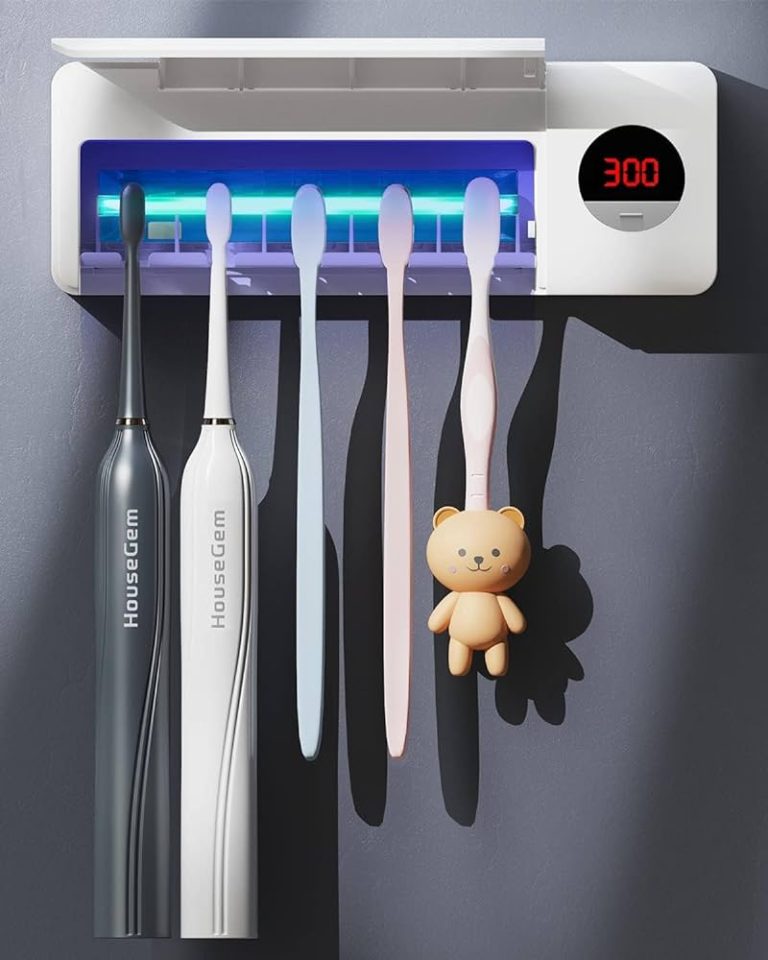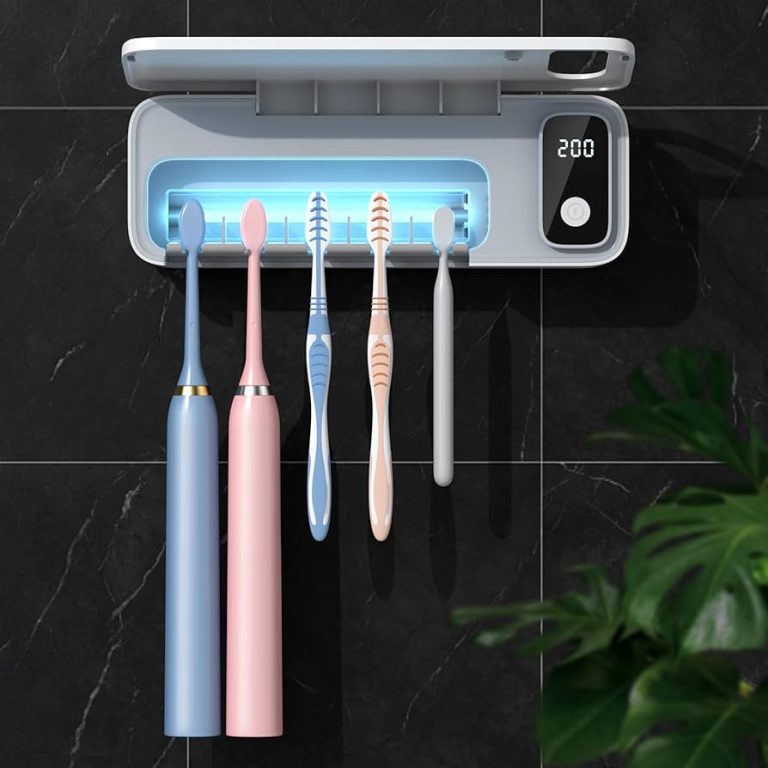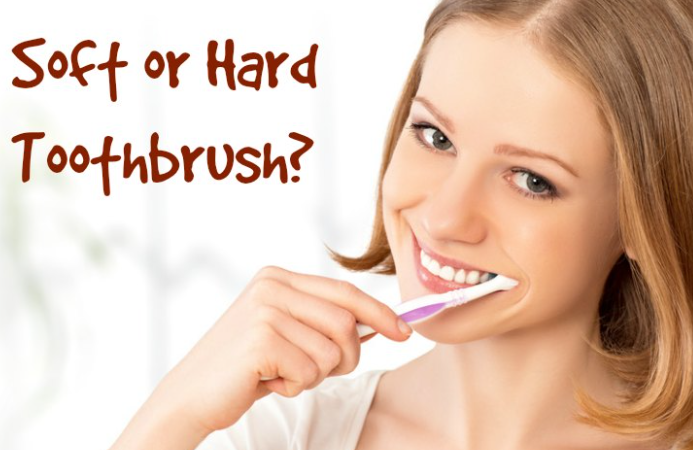Toothbrush Storage and Sanitizing, Essential Practices for Oral Hygiene
Proper toothbrush storage and sanitizing are crucial aspects of maintaining optimal oral hygiene. These practices prevent bacterial growth, reduce the risk of contamination, and ensure the longevity of your toothbrush. This article will delve into various storage solutions, effective sanitizing methods, and essential tips to keep your toothbrush clean and hygienic. By understanding and implementing these practices, you can significantly enhance your oral health routine and minimize the potential for oral infections.
In this comprehensive guide, we will explore traditional and innovative toothbrush storage options, discuss various sanitizing techniques, and provide practical tips for maintaining a hygienic oral care environment. We will also address the importance of proper storage location, cleaning frequency, and when to replace your toothbrush. By the end of this article, you will have a thorough understanding of how to optimize your toothbrush care routine for better oral health.
Traditional Toothbrush Storage Solutions
When it comes to storing toothbrushes, traditional methods have been widely used for decades. The most common traditional storage solutions include toothbrush holders and travel cases. These options offer simplicity and convenience, but they also come with their own set of advantages and disadvantages.
Toothbrush holders are ubiquitous in bathrooms worldwide. They provide a designated space for storing toothbrushes upright, allowing them to air dry between uses. Toothbrush holders come in various materials, such as plastic, ceramic, or stainless steel, and can accommodate multiple brushes, making them ideal for families. The affordability and accessibility of toothbrush holders make them a popular choice for many households.
However, traditional toothbrush holders are not without drawbacks. The primary concern is the potential for cross-contamination, especially in shared holders. Bacteria can accumulate in the base of the holder, potentially transferring between brushes. To mitigate this risk, regular cleaning of the holder is essential.
Travel cases, on the other hand, offer a portable solution for toothbrush storage. These compact cases protect toothbrushes from external contaminants during travel, making them indispensable for frequent travelers. Travel cases are typically made of durable plastic and feature ventilation holes to prevent moisture buildup.
While travel cases excel in portability, they may not be suitable for daily use at home. The enclosed environment can promote bacterial growth if the toothbrush is not completely dry before storage. Therefore, it’s crucial to allow the toothbrush to air dry thoroughly before placing it in a travel case.
Innovative Toothbrush Storage Solutions

As technology advances, so do toothbrush storage solutions. Innovative options have emerged to address the shortcomings of traditional methods and provide enhanced hygiene and convenience. These modern solutions include UV sanitizing toothbrush holders, electric toothbrush charging stations, and magnetic toothbrush holders.
UV sanitizing toothbrush holders represent a significant leap in toothbrush storage technology. These devices use ultraviolet light to kill bacteria and germs on toothbrush bristles. UV sanitizers typically feature a enclosed chamber where toothbrushes are placed for a specified sanitizing cycle. The UV light effectively eliminates up to 99.9% of bacteria, providing a highly hygienic storage solution.
The advantages of UV sanitizing holders are numerous. They offer a hands-free, automated sanitizing process, ensuring consistent hygiene without daily effort. Additionally, many models can accommodate multiple toothbrushes, making them suitable for family use. However, UV sanitizers tend to be more expensive than traditional holders and require a power source, which may limit placement options in the bathroom.
Electric toothbrush charging stations combine storage and charging functionality in one device. These stations are designed specifically for electric toothbrushes and often include sanitizing features. The convenience of having a dedicated charging and storage solution is a significant advantage for electric toothbrush users.
Charging stations typically provide a stable base for the toothbrush, ensuring proper upright storage. Some models incorporate UV sanitizing technology or other cleaning methods. However, it’s important to note that these stations may not be compatible with all electric toothbrush models, so users should verify compatibility before purchasing.
Magnetic toothbrush holders offer a stylish and space-saving storage solution. These holders use strong magnets to securely hold toothbrushes against a wall-mounted plate or surface. The minimalist design of magnetic holders makes them an attractive option for modern bathrooms.
The advantages of magnetic holders include easy cleaning, as there are no crevices where water can accumulate. They also keep toothbrushes separated, reducing the risk of cross-contamination. However, installation may require additional hardware, and not all toothbrushes are compatible with magnetic holders.
Effective Toothbrush Sanitizing Methods

Proper sanitizing is crucial for maintaining a hygienic toothbrush. Several methods can effectively eliminate bacteria and germs from toothbrush bristles. The most common sanitizing techniques include boiling, using antibacterial mouthwash, and employing UV sanitizing devices.
Boiling is a time-tested method for sanitizing toothbrushes. This technique involves submerging the toothbrush head in boiling water for about 3 minutes. Boiling effectively kills most bacteria and germs present on the bristles. However, it’s important to note that repeated boiling can damage some toothbrush materials, particularly plastic components. Therefore, this method should be used sparingly and with caution.
Using antibacterial mouthwash is another popular sanitizing method. To sanitize a toothbrush with mouthwash, simply soak the bristles in the solution for about 2 minutes. This method is easy to implement and uses a product that many people already have in their bathrooms. However, while mouthwash can reduce bacterial load, it may not be as effective as other sanitizing methods in eliminating all types of microorganisms.
UV sanitizing devices offer a high-tech solution for toothbrush sanitization. These devices use ultraviolet light to kill bacteria and viruses on toothbrush bristles. UV sanitizers are highly effective and safe for most toothbrush materials. They typically require a short sanitizing cycle of 5-10 minutes. While UV sanitizers can be more expensive than other methods, they provide consistent and reliable sanitization without the need for consumable products.
Here’s a comparison table of the three sanitizing methods:
| Method | Effectiveness | Convenience | Cost | Potential Drawbacks |
|---|---|---|---|---|
| Boiling | High | Moderate | Low | May damage toothbrush |
| Mouthwash | Moderate | High | Low | Less effective than other methods |
| UV Sanitizer | High | High | High | Initial investment cost |
Toothbrush Storage Tips for Optimal Hygiene

Proper toothbrush storage goes beyond choosing the right holder or sanitizing method. The location and environment in which you store your toothbrush play a crucial role in maintaining its hygiene. Here are some essential tips for optimal toothbrush storage:
1. Store toothbrushes upright: This position allows water to drain from the bristles, promoting faster drying and reducing bacterial growth.
2. Keep toothbrushes away from the toilet: The aerosol effect from flushing can spread bacteria onto nearby surfaces, including toothbrushes. Store brushes at least 3 feet away from the toilet.
3. Avoid humid environments: Excessive moisture promotes bacterial growth. If possible, store toothbrushes in a well-ventilated area of the bathroom.
4. Separate toothbrushes: If using a shared holder, ensure brushes don’t touch each other to prevent cross-contamination.
5. Clean holders regularly: Wash toothbrush holders at least once a week with hot, soapy water or run them through the dishwasher if they’re dishwasher-safe.
6. Replace toothbrushes regularly: The American Dental Association recommends replacing toothbrushes every 3-4 months or sooner if the bristles become frayed.
7. Use a toothbrush cover with caution: While covers can protect bristles from airborne contaminants, they can also trap moisture, promoting bacterial growth. If using a cover, ensure the brush is completely dry before covering.
8. Consider a wall-mounted holder: These holders keep toothbrushes off potentially contaminated counter surfaces and promote better air circulation.
By implementing these toothbrush storage tips, you can significantly reduce the risk of bacterial contamination and maintain a more hygienic oral care routine.
Conclusion: Embracing Proper Toothbrush Storage and Sanitizing
Proper toothbrush storage and sanitizing are fundamental aspects of maintaining optimal oral hygiene. By implementing the strategies and tips outlined in this article, you can significantly reduce the risk of bacterial contamination and ensure that your toothbrush remains a tool for health rather than a potential source of infection.
Remember that the key to effective toothbrush care lies in a combination of proper storage, regular sanitizing, and timely replacement. Whether you opt for traditional storage methods or embrace innovative solutions like UV sanitizers, the most important factor is consistency in your hygiene practices.
As you review your current toothbrush storage and sanitizing routine, consider which methods best fit your lifestyle and budget. Experiment with different techniques to find the most effective and convenient solution for your needs. By prioritizing toothbrush hygiene, you’re taking an important step towards better overall oral health.
For more information on oral hygiene best practices, consult with your dentist or visit reputable dental health websites. Your smile will thank you for the extra care and attention you give to this often-overlooked aspect of dental hygiene.

Meet David Anderson, Your Guide to Healthier Gums Welcome, I’m David Anderson, and I’m passionate about oral health. As someone who has personally experienced the challenges of receding gums, I understand the importance of finding the right toothbrush to protect and maintain gum health. That’s why I founded goodtoothbrushesforrecedinggums.com – to share my knowledge and expertise with others who are facing similar issues. With years of research and personal experience, I’ve curated a comprehensive resource dedicated to helping you find the best toothbrushes for receding gums. On our website, you’ll find: In-depth Reviews: We rigorously test and evaluate a variety of toothbrushes specifically designed for receding gums, providing you with honest and detailed reviews to guide your decision. Informative Guides: We offer expert advice and practical tips on how to choose the right toothbrush, proper brushing techniques, and other oral care practices that can help improve gum health. Community Support: We foster a supportive community where you can connect with others who are also dealing with receding gums, share experiences, and learn from each other. At goodtoothbrushesforrecedinggums.com, we believe that everyone deserves a healthy smile. Our mission is to empower you with the knowledge and tools you need to take control of your gum health and enjoy a confident smile for years to come. Join us on our journey to healthier gums! David Anderson Founder, goodtoothbrushesforrecedinggums.com







Great insights on toothbrush storage! I never realized how important drying is to prevent bacterial growth. Do you recommend any specific holders that minimize cross-contamination?
I found the section on UV sanitizers fascinating! Are they really effective against all types of bacteria? I’m considering one for my family.